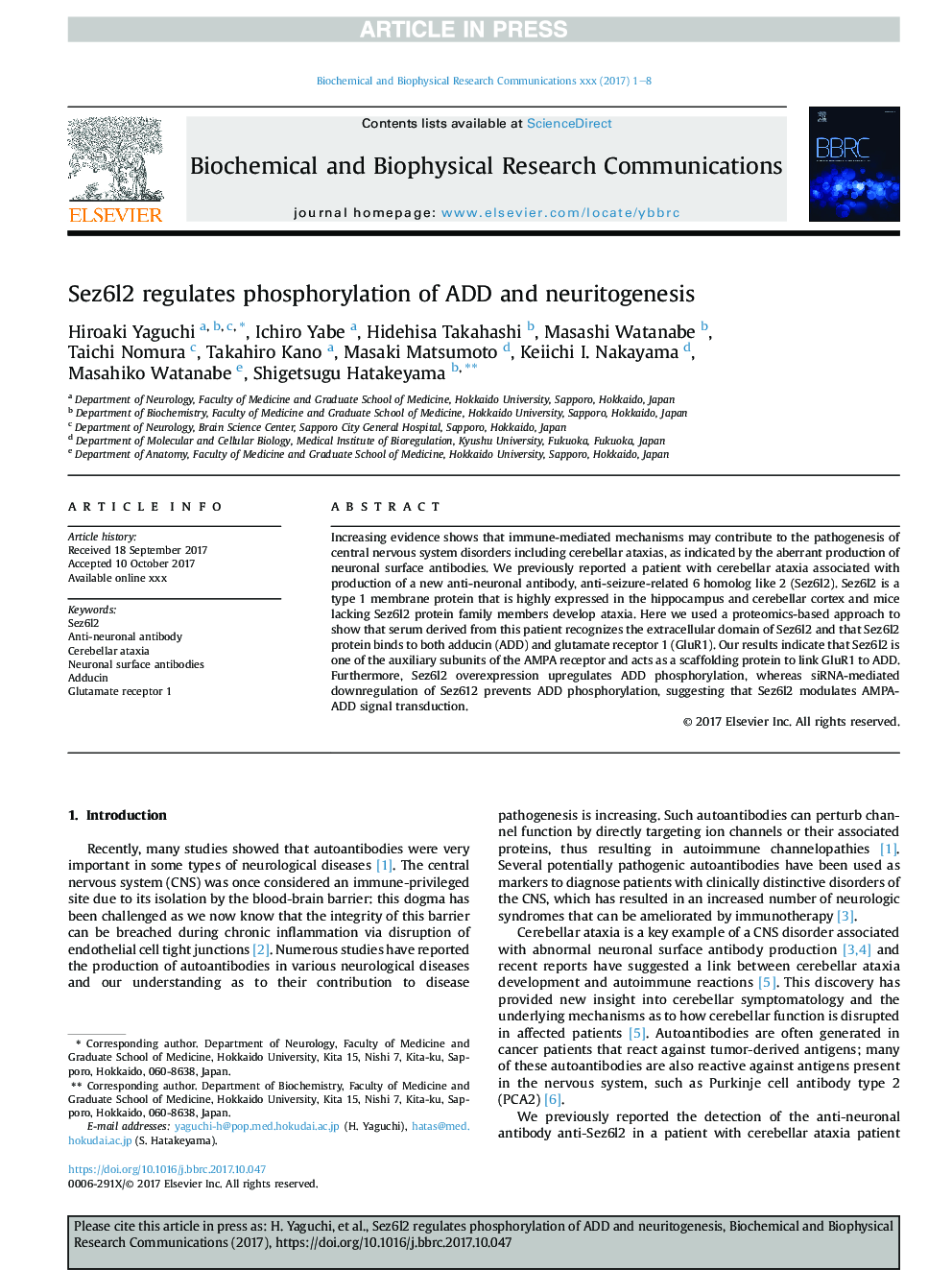| Article ID | Journal | Published Year | Pages | File Type |
|---|---|---|---|---|
| 8296007 | Biochemical and Biophysical Research Communications | 2017 | 8 Pages |
Abstract
Increasing evidence shows that immune-mediated mechanisms may contribute to the pathogenesis of central nervous system disorders including cerebellar ataxias, as indicated by the aberrant production of neuronal surface antibodies. We previously reported a patient with cerebellar ataxia associated with production of a new anti-neuronal antibody, anti-seizure-related 6 homolog like 2 (Sez6l2). Sez6l2 is a type 1 membrane protein that is highly expressed in the hippocampus and cerebellar cortex and mice lacking Sez6l2 protein family members develop ataxia. Here we used a proteomics-based approach to show that serum derived from this patient recognizes the extracellular domain of Sez6l2 and that Sez6l2 protein binds to both adducin (ADD) and glutamate receptor 1 (GluR1). Our results indicate that Sez6l2 is one of the auxiliary subunits of the AMPA receptor and acts as a scaffolding protein to link GluR1 to ADD. Furthermore, Sez6l2 overexpression upregulates ADD phosphorylation, whereas siRNA-mediated downregulation of Sez612 prevents ADD phosphorylation, suggesting that Sez6l2 modulates AMPA-ADD signal transduction.
Keywords
Related Topics
Life Sciences
Biochemistry, Genetics and Molecular Biology
Biochemistry
Authors
Hiroaki Yaguchi, Ichiro Yabe, Hidehisa Takahashi, Masashi Watanabe, Taichi Nomura, Takahiro Kano, Masaki Matsumoto, Keiichi I. Nakayama, Masahiko Watanabe, Shigetsugu Hatakeyama,
